-
 Bitcoin
Bitcoin $117400
-0.25% -
 Ethereum
Ethereum $3762
-0.57% -
 XRP
XRP $3.072
-1.57% -
 Tether USDt
Tether USDt $1.000
0.02% -
 BNB
BNB $786.5
-2.10% -
 Solana
Solana $175.6
-3.15% -
 USDC
USDC $0.9999
0.01% -
 Dogecoin
Dogecoin $0.2166
-2.88% -
 TRON
TRON $0.3268
-2.89% -
 Cardano
Cardano $0.7540
-3.38% -
 Hyperliquid
Hyperliquid $41.82
-3.43% -
 Sui
Sui $3.723
-2.44% -
 Stellar
Stellar $0.4030
-3.66% -
 Chainlink
Chainlink $17.47
-1.80% -
 Bitcoin Cash
Bitcoin Cash $568.2
1.00% -
 Hedera
Hedera $0.2531
-3.51% -
 Avalanche
Avalanche $23.09
-4.91% -
 Litecoin
Litecoin $109.6
1.22% -
 UNUS SED LEO
UNUS SED LEO $8.954
-0.09% -
 Toncoin
Toncoin $3.366
-0.23% -
 Ethena USDe
Ethena USDe $1.001
0.01% -
 Shiba Inu
Shiba Inu $0.00001269
-2.93% -
 Uniswap
Uniswap $9.816
-4.14% -
 Polkadot
Polkadot $3.754
-3.49% -
 Monero
Monero $308.0
-2.79% -
 Dai
Dai $1.000
-0.01% -
 Bitget Token
Bitget Token $4.497
-0.77% -
 Pepe
Pepe $0.00001117
-2.61% -
 Cronos
Cronos $0.1428
-0.40% -
 Aave
Aave $269.9
-4.24%
How to use multiple EMAs on a crypto chart?
EMAs help crypto traders spot trends and reversals by weighting recent prices more heavily, with crossovers and ribbons offering key entry and exit signals.
Jul 30, 2025 at 11:29 am
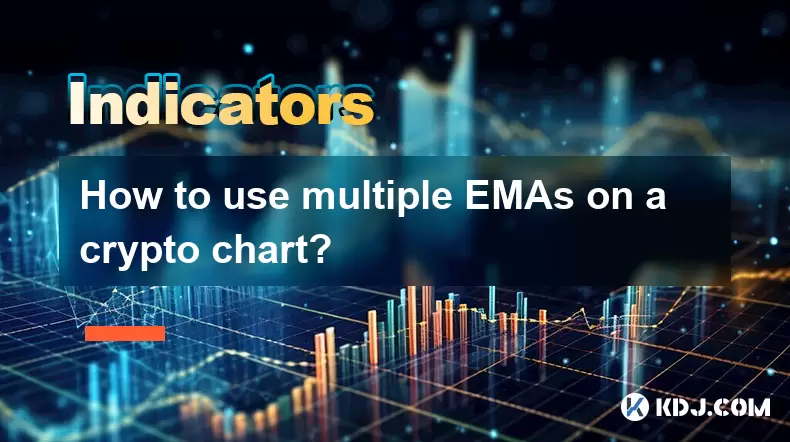
Understanding the Role of EMAs in Crypto Trading
Exponential Moving Averages (EMAs) are widely used technical indicators in cryptocurrency trading due to their responsiveness to recent price changes. Unlike Simple Moving Averages (SMAs), which treat all data points equally, EMAs place greater weight on the most recent prices, making them more sensitive to new information. This feature is especially valuable in the fast-moving crypto markets, where price shifts can occur rapidly. Traders use multiple EMAs simultaneously to identify trend direction, momentum, and potential reversal points. By layering different EMA periods—such as the 9, 21, and 50—on a single chart, traders gain a multidimensional view of market behavior. Each EMA acts as a dynamic support or resistance level depending on the prevailing trend.
Setting Up Multiple EMAs on a Trading Platform
To begin using multiple EMAs, you must first access a charting platform that supports technical indicators. Popular platforms like TradingView, Binance, or Coinbase Advanced Trade offer built-in EMA tools. Open the desired cryptocurrency chart, such as BTC/USDT or ETH/USD. Locate the "Indicators" button, usually found at the top of the chart interface. Search for "Exponential Moving Average" in the indicator library. Add the first EMA and configure its period—common choices include 9, 21, 50, and 200. Repeat this process to overlay additional EMAs. Each EMA can be assigned a different color for clarity, such as green for the 9-period, blue for the 21-period, and red for the 50-period. Ensure that the EMAs are applied to the correct price data (typically closing prices) and confirm that they appear on the chart.
Interpreting EMA Crossovers for Entry and Exit Signals
One of the most common strategies involving multiple EMAs is the crossover method. When a shorter-period EMA crosses above a longer-period EMA, it may signal a bullish trend. Conversely, when a shorter EMA crosses below a longer one, it could indicate bearish momentum. For example, if the 9-period EMA crosses above the 21-period EMA, this is known as a "golden cross" and is often interpreted as a buy signal. On the flip side, if the 9-period EMA crosses below the 21-period EMA, forming a "death cross," traders may consider selling or shorting. These signals gain reliability when confirmed by volume spikes or alignment with higher timeframes. It’s important to note that crossovers can produce false signals during sideways or choppy markets, so they should not be used in isolation.
Using EMA Ribbons to Identify Trend Strength
An advanced technique involves creating an EMA ribbon, which consists of multiple EMAs plotted closely together. A typical ribbon setup includes EMAs of 8, 13, 21, 34, 55, and 89 periods. When these lines run parallel and are spaced evenly, it indicates a strong, sustained trend. If the price is consistently above the entire ribbon, the trend is bullish. If the price is below, the trend is bearish. When the EMAs in the ribbon converge or twist around each other, it suggests market indecision or a potential reversal. The visual pattern of the ribbon helps traders assess momentum and trend stability at a glance. For instance, a tightly packed ribbon followed by expansion may signal the beginning of a new trend. Adjusting the number of EMAs in the ribbon allows customization based on trading style—short-term traders may use fewer EMAs, while long-term investors might include more.
Combining EMAs with Other Indicators for Confirmation
While EMAs are powerful on their own, combining them with other technical tools improves accuracy. The Relative Strength Index (RSI) can help determine whether a market is overbought or oversold when an EMA crossover occurs. For example, if the 9 EMA crosses above the 21 EMA but the RSI is above 70, the bullish signal may be weakened by overbought conditions. Similarly, the MACD (Moving Average Convergence Divergence) complements EMAs by showing momentum shifts. A bullish EMA crossover supported by a MACD histogram turning positive adds confidence to the trade setup. Volume indicators also play a role—increasing volume during a crossover suggests stronger market participation. Some traders use support and resistance levels alongside EMAs to define entry zones. If a bullish crossover occurs near a key support level, the probability of a successful trade increases.
Adjusting EMA Settings Based on Timeframes
The effectiveness of EMAs depends heavily on the selected timeframe. On a 15-minute chart, shorter EMAs like 9 and 21 are more responsive and suitable for scalping. On a daily chart, longer EMAs such as 50 and 200 become more relevant for identifying major trends. Traders should adjust EMA periods to match their strategy. For intraday trading, a combination of 9, 12, and 26 EMAs might be optimal. For swing trading, 20, 50, and 100 EMAs provide clearer trend signals. Backtesting different EMA combinations on historical data helps determine which settings work best for a specific cryptocurrency pair. Some assets, like Bitcoin, may respond better to round-number EMAs, while altcoins with higher volatility might require tighter or more dynamic settings. Always ensure that the EMAs are recalibrated when switching between assets or timeframes.
Frequently Asked Questions
Can I use EMAs on all cryptocurrency pairs?
Yes, EMAs can be applied to any cryptocurrency trading pair, including BTC/USDT, ETH/BTC, or DOGE/USDT. The calculation method remains consistent regardless of the asset. However, the optimal EMA periods may vary based on the volatility and trading volume of the specific pair. Highly volatile altcoins might require shorter EMAs to capture rapid price movements, while major pairs like BTC/USDT often work well with standard settings.
How do I know if an EMA crossover is reliable?
A crossover gains reliability when it occurs with high trading volume and aligns with the trend on a higher timeframe. For example, a 9/21 EMA bullish crossover on a 4-hour chart is more trustworthy if the daily chart also shows an uptrend. Avoid acting on crossovers during low-volume periods or when the price is moving sideways between clear support and resistance levels.
Is it possible to automate EMA-based trading strategies?
Yes, many trading platforms support automated bots or scripts that execute trades based on EMA crossovers. Using Pine Script on TradingView, you can code alerts or strategies that trigger buy or sell orders when specific EMA conditions are met. Ensure proper risk management settings, such as stop-loss and take-profit levels, are included in the automation.
Should I use closing price or another price type for EMA calculations?
Most traders use the closing price for EMA calculations because it reflects the final consensus of value for a given period. Some advanced strategies experiment with high, low, or weighted prices, but these are less common. Sticking to closing prices ensures consistency and compatibility with widely recognized trading methodologies.
Disclaimer:info@kdj.com
The information provided is not trading advice. kdj.com does not assume any responsibility for any investments made based on the information provided in this article. Cryptocurrencies are highly volatile and it is highly recommended that you invest with caution after thorough research!
If you believe that the content used on this website infringes your copyright, please contact us immediately (info@kdj.com) and we will delete it promptly.
- LYNO Token Presale: AI Arbitrage Revolution in DeFi
- 2025-07-31 05:11:11
- Pepecoin Successors: Can These Cryptocurrencies Make You a Millionaire?
- 2025-07-31 05:50:12
- AML Bitcoin Fraud: Cracking Down on Crypto Crime in the Big Apple and Beyond
- 2025-07-31 04:33:53
- Cardano (ADA) in 2025: Navigating Crypto's Future
- 2025-07-31 03:52:07
- Solana Meme Coin Price Prediction: Will the Frog Outleap the Dog?
- 2025-07-31 03:52:07
- Bitcoin's Bullish Outlook: CryptoQuant's Insights on Futures Market Cooling
- 2025-07-31 03:59:10
Related knowledge

How does the VWAP line help in identifying overbought and oversold market conditions?
Jul 31,2025 at 05:19am
Understanding the VWAP Line and Its Role in Technical AnalysisThe Volume Weighted Average Price (VWAP) is a critical tool used by traders within the c...
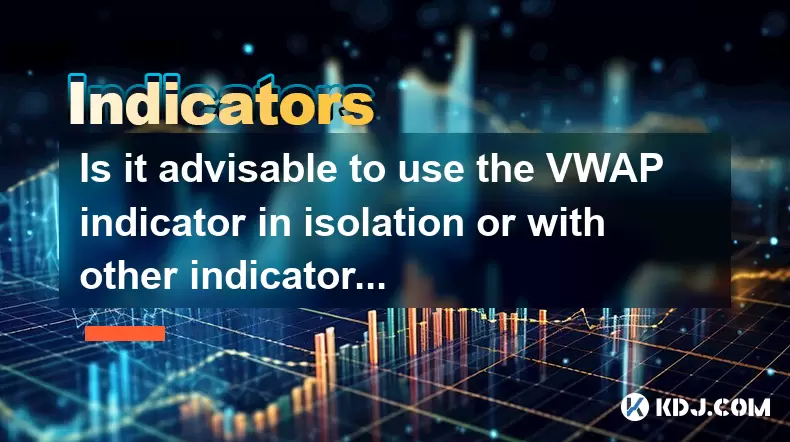
Is it advisable to use the VWAP indicator in isolation or with other indicators?
Jul 31,2025 at 06:48am
Understanding the VWAP Indicator and Its Core FunctionalityThe Volume Weighted Average Price (VWAP) is a widely used technical analysis tool in the cr...
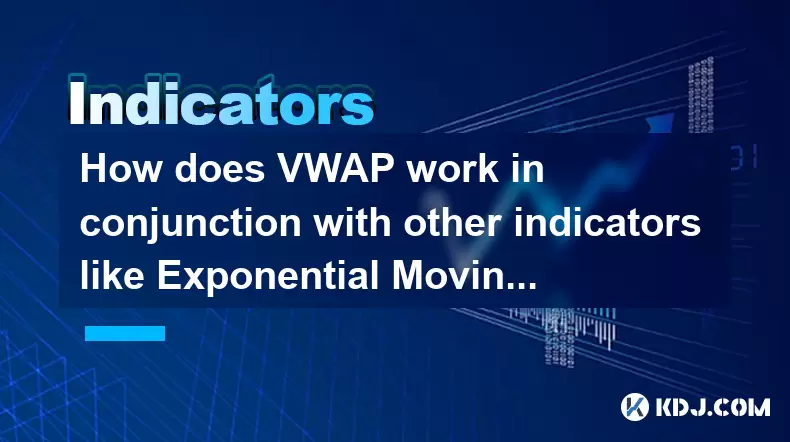
How does VWAP work in conjunction with other indicators like Exponential Moving Averages (EMAs)?
Jul 31,2025 at 04:38am
Understanding VWAP and Its Role in Crypto TradingThe Volume Weighted Average Price (VWAP) is a critical analytical tool in cryptocurrency trading, par...
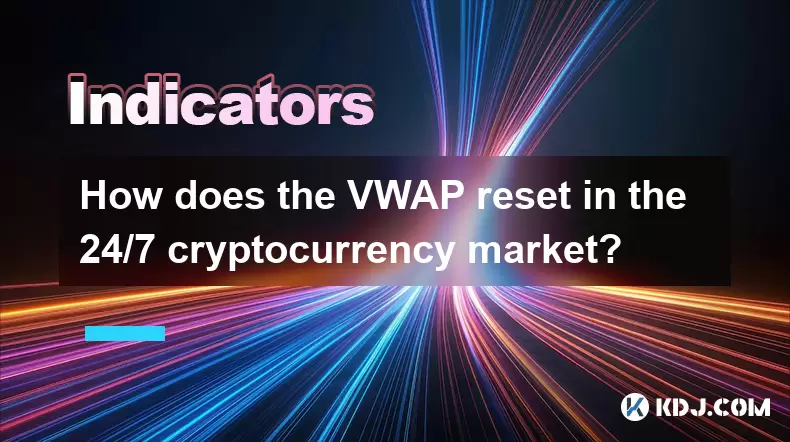
How does the VWAP reset in the 24/7 cryptocurrency market?
Jul 31,2025 at 06:38am
Understanding VWAP in Cryptocurrency MarketsThe Volume Weighted Average Price (VWAP) is a trading benchmark that calculates the average price of an as...

What exactly does the VWAP indicator measure?
Jul 31,2025 at 03:26am
Understanding the Core Concept of VWAPThe VWAP (Volume Weighted Average Price) indicator measures the average price of a financial asset, weighted by ...
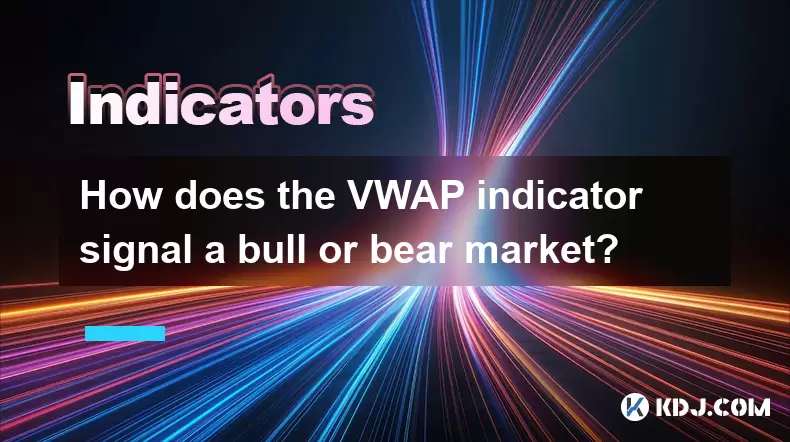
How does the VWAP indicator signal a bull or bear market?
Jul 31,2025 at 02:57am
Understanding the VWAP Indicator in Cryptocurrency TradingThe Volume Weighted Average Price (VWAP) is a widely used technical analysis tool in cryptoc...

How does the VWAP line help in identifying overbought and oversold market conditions?
Jul 31,2025 at 05:19am
Understanding the VWAP Line and Its Role in Technical AnalysisThe Volume Weighted Average Price (VWAP) is a critical tool used by traders within the c...

Is it advisable to use the VWAP indicator in isolation or with other indicators?
Jul 31,2025 at 06:48am
Understanding the VWAP Indicator and Its Core FunctionalityThe Volume Weighted Average Price (VWAP) is a widely used technical analysis tool in the cr...

How does VWAP work in conjunction with other indicators like Exponential Moving Averages (EMAs)?
Jul 31,2025 at 04:38am
Understanding VWAP and Its Role in Crypto TradingThe Volume Weighted Average Price (VWAP) is a critical analytical tool in cryptocurrency trading, par...

How does the VWAP reset in the 24/7 cryptocurrency market?
Jul 31,2025 at 06:38am
Understanding VWAP in Cryptocurrency MarketsThe Volume Weighted Average Price (VWAP) is a trading benchmark that calculates the average price of an as...

What exactly does the VWAP indicator measure?
Jul 31,2025 at 03:26am
Understanding the Core Concept of VWAPThe VWAP (Volume Weighted Average Price) indicator measures the average price of a financial asset, weighted by ...

How does the VWAP indicator signal a bull or bear market?
Jul 31,2025 at 02:57am
Understanding the VWAP Indicator in Cryptocurrency TradingThe Volume Weighted Average Price (VWAP) is a widely used technical analysis tool in cryptoc...
See all articles

























































































